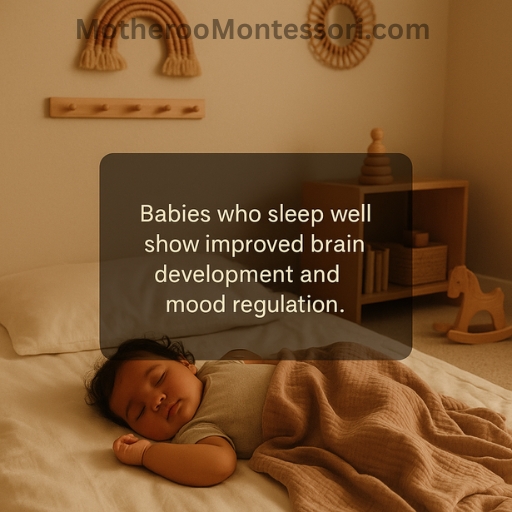As a parent navigating the complex world of infant care, one of the most debated topics you’ll encounter is pacifier use. While these simple devices can provide instant comfort to a fussy baby, understanding their long-term implications on oral development is crucial for making informed decisions.
This comprehensive guide examines the evidence-based pros and cons of pacifier use, explores the impact on myofunctional development, and shares insights about the Ninni pacifier experience.
Understanding the Natural Need for Sucking
Babies are born with a powerful, instinctive need to suck that begins even before birth. Ultrasound scans often reveal fetuses sucking their thumbs in the womb, demonstrating that this reflex is neurologically embedded and essential for survival. After birth, this sucking reflex serves multiple purposes beyond nutrition, including self-soothing and pain relief through the release of endorphins.
The Benefits of Pacifier Use
SIDS Risk Reduction
One of the most compelling arguments for pacifier use is its association with reduced risk of Sudden Infant Death Syndrome (SIDS). The American Academy of Pediatrics recommends offering a pacifier at both naptime and bedtime to reduce SIDS risk. Research suggests that pacifier use at sleep time consistently decreases SIDS risk, with one study showing a significant protective effect (adjusted odds ratio 0.30). The protective mechanism may involve maintaining lighter sleep patterns and ensuring adequate airway space around the baby’s mouth and nose.
Comfort and Soothing
Pacifiers excel at their primary function: providing comfort and reducing crying. They can help babies fall asleep faster and provide effective pain relief during medical procedures such as vaccinations and blood draws. For parents dealing with fussy infants, pacifiers can offer much-needed relief and help establish better sleep patterns.
Benefits for Premature Infants
Premature babies particularly benefit from pacifier use, as it provides essential oral stimulation that helps improve breastfeeding and bottle-feeding skills. Studies show that preterm infants who use pacifiers are often discharged from hospitals sooner, as the sucking motion helps strengthen the muscles needed for feeding.
The Risks and Concerns
Dental and Orthodontic Issues
Extended pacifier use poses significant risks to dental development. Research indicates that pacifier use beyond age 3 contributes to higher incidence of anterior open bite, posterior cross bite, and narrow intercuspidal width. The longer and more frequently a child uses a pacifier, the greater the potential for harmful dental effects. These changes occur because the pacifier forces the jaw open beyond its normal position, potentially causing the face to grow long and narrow.
Impact on Oral Motor Development
Perhaps the most concerning aspect of prolonged pacifier use is its impact on oral motor development. When a pacifier is in the mouth, it restricts the natural movement of the tongue, lips, and jaw that are essential for proper speech development. The tongue drops down and under the pacifier, preventing the varied oral movements necessary for developing strong, coordinated oral muscles.
Myofunctional Disorders
Extended pacifier use can lead to orofacial myofunctional disorders (OMDs), which are movement patterns that interfere with normal growth and development of oral structures. These disorders can result in structural changes including misaligned teeth, articulation disorders like lisps, and breathing difficulties including mouth breathing. The continuous pressure of the pacifier against the hard palate can also cause it to become high and narrow, potentially affecting nasal breathing.
Speech and Language Development
Research shows mixed results regarding pacifier use and speech development, but there are legitimate concerns. Prolonged pacifier use can delay oral motor development, which is crucial since lower levels of oral motor skills correspond with lower language levels. One study found that children who used pacifiers for three years or more were three times more likely to develop speech disorders.
The Ninni Pacifier Experience: A Personal Journey
The Ninni pacifier represents an innovative approach to pacifier design, created by two mothers who sought to develop a more breast-like alternative. This pacifier features a patented design that mimics the natural breastfeeding experience, with a soft, flexible nipple that moves with the baby’s sucking motion.
Design Features and Benefits
The Ninni pacifier’s breast-like shape promotes jaw, lip, and tongue stability while stimulating the natural sucking reflex. Unlike traditional pacifiers, its soft, flexible design allows for more natural oral movements and reduces the risk of nipple confusion for breastfeeding babies. The pacifier is made from 100% medical-grade silicone and is designed to support proper oral motor development.
Real-World Experience: Early Weaning Success
Many parents, like those who successfully weaned their infants by 5 months, have found that early pacifier weaning can be accomplished more easily than waiting until the child is older. The optimal window for pacifier weaning is between 4-6 months of age, as this period precedes major developmental leaps and separation anxiety phases that make weaning more challenging.
Early weaning at 5 months aligns with expert recommendations, as this timing allows parents to eliminate the pacifier before it becomes a deeply ingrained sleep association while still providing the SIDS protection benefits during the most critical early months. The transition at this age typically takes about a week and can be accomplished through gradual reduction or substitution with other soothing methods.
Timing and Weaning Strategies
Optimal Timing for Introduction and Weaning
If you choose to use a pacifier, timing is crucial. Wait until breastfeeding is well established, typically around 3-4 weeks, to avoid nipple confusion. For weaning, the ideal windows are either between 4-6 months or after 2.5 years of age. The period between 6 months and 2.5 years involves significant developmental leaps, separation anxiety, and language development that can make pacifier weaning more traumatic.
Weaning Strategies
Several evidence-based approaches can facilitate successful pacifier weaning:
- Gradual Approach: Start by removing the pacifier during specific times (daytime first, then nighttime)
- Cold Turkey Method: Complete elimination, though this may cause more initial distress
- Limiting Use: Restrict pacifier use to sleep times only as a preliminary step
- Size Reduction Systems: Gradual reduction of pacifier size for babies 6-18 months
Professional Recommendations and Guidelines
Healthcare professionals generally agree on several key points regarding pacifier use:
- Avoid introducing pacifiers before breastfeeding is established (3-4 weeks)
- Begin weaning by 6-12 months when SIDS risk decreases
- Complete weaning by age 2-3 to prevent dental complications
- If pacifier use continues past age 3, consult an orofacial myologist
Making an Informed Decision
The decision to use a pacifier should be individualized based on your baby’s needs, your breastfeeding goals, and your family’s circumstances. While pacifiers offer legitimate benefits, particularly for SIDS prevention and soothing, the risks associated with prolonged use are significant and well-documented.
For parents who choose to use pacifiers, selecting a design that supports natural oral development (like the Ninni pacifier) and planning for early weaning can maximize benefits while minimizing risks. The success of early weaning at 5 months demonstrates that with proper timing and approach, parents can provide the benefits of pacifier use during the critical early months while avoiding the long-term complications associated with extended use.
Conclusion
The pacifier debate ultimately comes down to balancing immediate comfort and safety benefits against potential long-term developmental concerns. While pacifiers can be valuable tools for soothing infants and reducing SIDS risk, their impact on oral motor development and dental health requires careful consideration. Early weaning strategies, such as the successful 5-month transition described above, offer a practical approach to maximizing benefits while minimizing risks.
Parents should work closely with their pediatricians, lactation consultants, and dental professionals to develop individualized plans that support their child’s overall development. Remember that every baby is different, and what works for one family may not work for another. The key is staying informed about the evidence and making decisions that align with your child’s specific needs and your family’s goals.
- https://www.webmd.com/baby/pros-and-cons-of-using-a-pacifier
- https://familydoctor.org/pacifiers-benefits-and-risks/
- https://blog.lovevery.com/child-development/pacifier-pros-and-cons/
- https://pubmed.ncbi.nlm.nih.gov/17929742/
- https://pubmed.ncbi.nlm.nih.gov/17256438/
- https://www.frontiersin.org/journals/psychology/articles/10.3389/fpsyg.2024.1349323/full
- https://www.whattoexpect.com/baby-products/pacifiers/
- https://heloa.app/en/blog/1-3-years/health/are-pacifiers-good-or-bad-for-babies
- https://myologyworks.com/index.php/pacifiers/
- https://halliebulkin.com/pacifiers-and-their-impact-on-orofacial-development/
- https://ninnico.com/blogs/news/smart-pacifier-use-promotes-healthy-oral-motor-development
- https://australianassociationoforofacialmyology.org.au/wp-content/uploads/2022/07/GUIDELINES-FOR-SAFER-USE-OF-PACIFIER-May2022.pdf
- https://www.farmvillepediatricdental.com/pacifier-use-consensus
- https://www.yeahbabygoods.com/blogs/the-blog/pacifiers-and-oral-motor-development
- https://www.tandemspeechtherapy.com/2018/05/24/pacifier-use/
- https://www.reddit.com/r/Parenting/comments/c5rmpg/has_anyone_weaned_the_pacifier_at_6_months/
- https://restoredental.com/the-pacifier-problem/
- https://www.nspt4kids.com/parenting/sucking-pacifier-harm-speech-development
- https://huckleberrycare.com/blog/weaning-from-pacifier
- https://www.healthline.com/health/baby/pacifier-weaning
- https://takingcarababies.com/weaning-the-pacifier
- https://www.littleones.co/blogs/our-blog/when-and-how-to-remove-the-pacifier
- https://pubmed.ncbi.nlm.nih.gov/21505778/
- https://www.thetinyhumanco.com/product-page/ninni-co-pacifier
- https://www.sleepandthecity.com/blog-posts/2017/10/6/pacifier-weaning-the-dos-the-donts-and-the-gentle-solution-for-your-toddler
- https://ninnico.com/collections/pacifiers
- https://ninnico.com
- https://lactationhub.com/ninni-co-pacifier
- https://thelactationcollection.com/product-reviews/ninni-co-pacifier/
- https://ourlittlehelpers.com.au/shop/bibs-dummies-anatomical-nipple/
- https://www.reddit.com/r/beyondthebump/comments/y6hwlz/ninni_pacifier_reviews/
- https://sensorysolutions.org/home/blog/effects-extended-pacifier-use-infants/
- https://www.chrichmond.org/blog/details/is-it-time-to-pitch-the-pacifier
- https://www.kinspirehealth.com/blog/oral-motor-skills-development-milestones-activities-more
- https://pubmed.ncbi.nlm.nih.gov/12881939/
- https://www.webmd.com/parenting/baby/what-to-know-about-nipple-confusion
- https://activelearningspace.org/oral-motor-skills/
- https://www.mayoclinic.org/healthy-lifestyle/infant-and-toddler-health/in-depth/pacifiers/art-20048140
- https://www.babycenter.com/baby/crying-colic/pacifiers-pros-cons-and-smart-ways-to-use-them_128
- https://www.happiestbaby.com/blogs/toddler/when-to-stop-pacifier-use
- https://raisingchildren.net.au/preschoolers/sleep/night-time-problems/dummies-helping-your-child-let-go
- https://www.thegentlevillage.com.au/shop/p/ninni-co-pacifier-oral-development
- https://ninnico.com/collections/all
- https://bibsworld.com/blogs/guides/the-pacifier-impact-on-teeth
- https://pubmed.ncbi.nlm.nih.gov/25493658/












